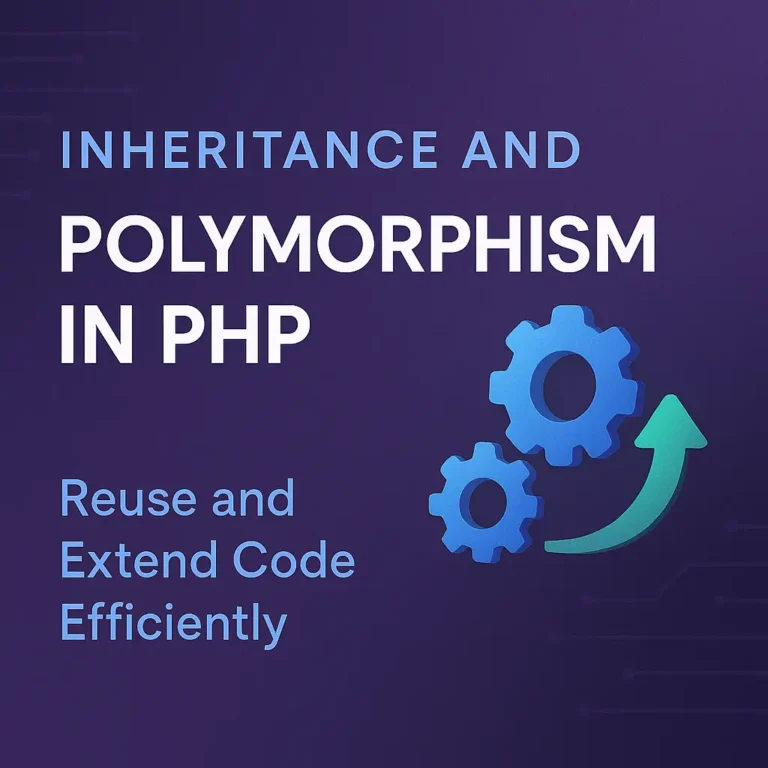However, there are situations where a deep copy is required, necessitating a more thorough copying process. This article will explore the concepts of shallow and deep copies in PHP and how to implement a cloneable interface to manage these operations effectively.
Shallow Copy vs. Deep Copy
Shallow Copy
A shallow copy of an object duplicates the object itself, but not the objects that it references. This means that if the original object contains references to other objects, the cloned object will reference the same instances, not copies of them.
Example: Shallow Copy in PHP
class Address {
public $street;
public $city;
public function __construct($street, $city) {
$this->street = $street;
$this->city = $city;
}
}
class User {
public $name;
public $address;
public function __construct($name, Address $address) {
$this->name = $name;
$this->address = $address;
}
public function __clone() {
// Shallow copy, no need to manually clone the Address object
}
}
$address = new Address("123 Main St", "Springfield");
$user1 = new User("John Doe", $address);
$user2 = clone $user1;
$user2->name = "Jane Smith";
$user2->address->street = "456 Elm St";
echo $user1->name . " lives at " . $user1->address->street . "\n"; // Output: John Doe lives at 456 Elm St
echo $user2->name . " lives at " . $user2->address->street . "\n"; // Output: Jane Smith lives at 456 Elm St
In this example, cloning user1 to create user2 results in both user1 and user2 sharing the same Address object. Modifying the address through user2 also changes it for user1, demonstrating the behavior of a shallow copy.
Deep Copy
A deep copy involves duplicating the object as well as all objects referenced by it. This ensures that the cloned object and the original object are entirely independent of each other.
Example: Deep Copy in PHP
class Address {
public $street;
public $city;
public function __construct($street, $city) {
$this->street = $street;
$this->city = $city;
}
public function __clone() {
// Nothing special needed here for deep copy as Address has no references
}
}
class User {
public $name;
public $address;
public function __construct($name, Address $address) {
$this->name = $name;
$this->address = $address;
}
public function __clone() {
// Create a deep copy of the address
$this->address = clone $this->address;
}
}
$address = new Address("123 Main St", "Springfield");
$user1 = new User("John Doe", $address);
$user2 = clone $user1;
$user2->name = "Jane Smith";
$user2->address->street = "456 Elm St";
echo $user1->name . " lives at " . $user1->address->street . "\n"; // Output: John Doe lives at 123 Main St
echo $user2->name . " lives at " . $user2->address->street . "\n"; // Output: Jane Smith lives at 456 Elm St
In this deep copy example, cloning user1 to create user2 also involves cloning the Address object. Changes to user2‘s address do not affect user1, demonstrating that they are now independent objects.
Implementing Cloneable Interface
While PHP does not have a built-in Cloneable interface like Java, you can create your own interface to ensure classes implement the __clone method properly.
Example: Implementing a Cloneable Interface
Step 1: Define the Cloneable Interface
interface Cloneable {
public function __clone();
}
This interface simply defines the __clone method, ensuring any implementing class provides its own cloning logic.
Step 2: Implementing the Interface in Classes
class Address implements Cloneable {
public $street;
public $city;
public function __construct($street, $city) {
$this->street = $street;
$this->city = $city;
}
public function __clone() {
// No additional logic needed here for Address class
}
}
class User implements Cloneable {
public $name;
public $address;
public function __construct($name, Address $address) {
$this->name = $name;
$this->address = $address;
}
public function __clone() {
// Implement deep copy for the User class
$this->address = clone $this->address;
}
}
Step 3: Using the Cloneable Interface
$address = new Address("123 Main St", "Springfield");
$user1 = new User("John Doe", $address);
$user2 = clone $user1;
$user2->name = "Jane Smith";
$user2->address->street = "456 Elm St";
echo $user1->name . " lives at " . $user1->address->street . "\n"; // Output: John Doe lives at 123 Main St
echo $user2->name . " lives at " . $user2->address->street . "\n"; // Output: Jane Smith lives at 456 Elm St
By implementing the Cloneable interface, we ensure that both User and Address classes provide their own cloning logic, facilitating both shallow and deep copies as required.
Practical Considerations
Handling Nested Objects
In real-world applications, objects often contain nested objects, making deep copying more complex. Each nested object must be cloned to ensure complete independence from the original.
Example: Deep Copy with Nested Objects
class Phone {
public $number;
public function __construct($number) {
$this->number = $number;
}
public function __clone() {
// Nothing needed here for Phone class
}
}
class ContactInfo {
public $email;
public $phone;
public function __construct($email, Phone $phone) {
$this->email = $email;
$this->phone = $phone;
}
public function __clone() {
// Ensure deep copy of phone
$this->phone = clone $this->phone;
}
}
class Employee implements Cloneable {
public $name;
public $contactInfo;
public function __construct($name, ContactInfo $contactInfo) {
$this->name = $name;
$this->contactInfo = $contactInfo;
}
public function __clone() {
// Deep copy for contact info
$this->contactInfo = clone $this->contactInfo;
}
}
$phone = new Phone("123-456-7890");
$contactInfo = new ContactInfo("john@example.com", $phone);
$employee1 = new Employee("John Doe", $contactInfo);
$employee2 = clone $employee1;
$employee2->name = "Jane Smith";
$employee2->contactInfo->email = "jane@example.com";
$employee2->contactInfo->phone->number = "098-765-4321";
echo $employee1->name . " can be reached at " . $employee1->contactInfo->email . " and " . $employee1->contactInfo->phone->number . "\n";
// Output: John Doe can be reached at john@example.com and 123-456-7890
echo $employee2->name . " can be reached at " . $employee2->contactInfo->email . " and " . $employee2->contactInfo->phone->number . "\n";
// Output: Jane Smith can be reached at jane@example.com and 098-765-4321
In this example, the Employee class has a ContactInfo object, which itself contains a Phone object. Implementing deep copying ensures that changes to employee2 do not affect employee1.
Avoiding Circular References
Circular references occur when objects reference each other, which can lead to infinite loops during cloning. It’s crucial to handle such scenarios carefully to prevent issues.
Example: Circular References Handling
class Department implements Cloneable {
public $name;
public $manager;
public function __construct($name) {
$this->name = $name;
}
public function setManager(Employee $manager) {
$this->manager = $manager;
}
public function __clone() {
// Ensure deep copy without causing infinite loops
$this->manager = clone $this->manager;
}
}
$dept = new Department("IT");
$employee = new Employee("John Doe", $contactInfo);
$dept->setManager($employee);
$employee->department = $dept;
$deptClone = clone $dept;
echo $deptClone->manager->name; // Output: John Doe
In this scenario, cloning the Department also clones its manager, ensuring that the department and its manager are independent from their originals.
Conclusion
Object cloning in PHP is a powerful technique for creating copies of objects. Understanding the differences between shallow and deep copies is crucial for correctly managing object references. By implementing cloning logic through the __clone method and utilizing a custom Cloneable interface, developers can ensure their objects are cloned appropriately, maintaining independence where necessary.
Properly handling nested objects and circular references ensures robust and reliable cloning, essential for complex applications. By following these guidelines, you can effectively manage object cloning in PHP, enhancing your application’s flexibility and maintainability.






